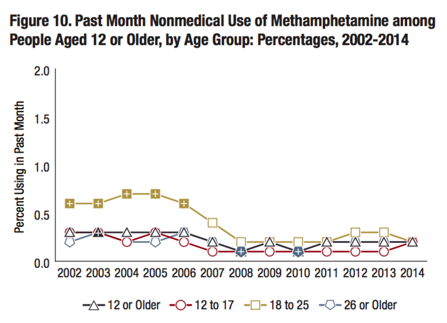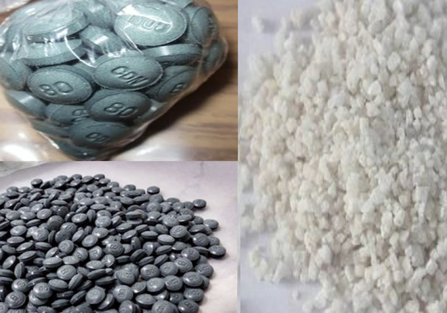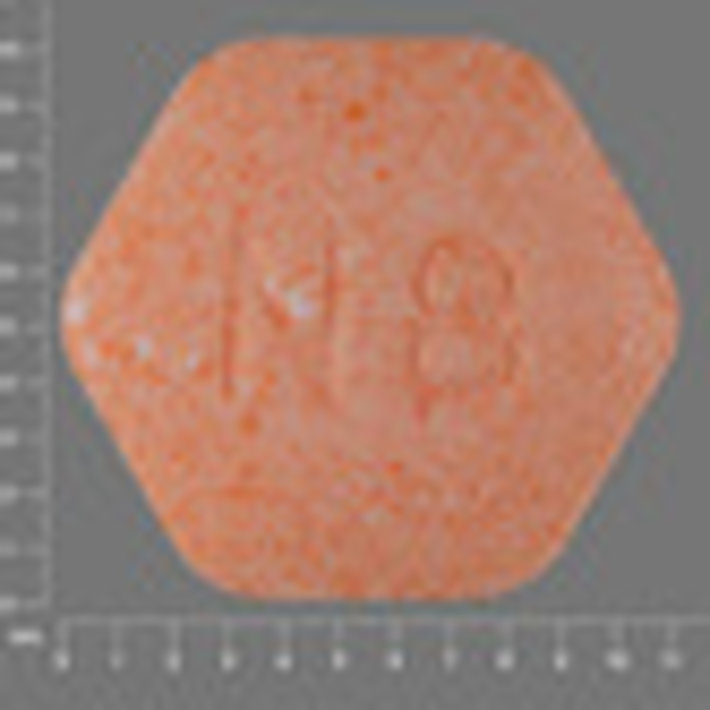New Workplace Drug Tests Reveal Steep Increases in Stimulant Use

Every year, the results of millions of workplace drug tests performed by Quest Diagnostics provide insight into drug use trends across America. Of course, this insight only applies to employed drug users, but as the National Survey on Drug Use and Health tells us, more than half of those who are addicted to drugs are employed full-time. This year, the Quest Diagnostics workplace drug test report makes it very clear that more people in our workplaces are using stimulants like cocaine and methamphetamine.
This shift toward stimulants indicates a significant change in drug abuse trends in this country. Cocaine use fell steadily after reaching a high point in 2005, perhaps in response to increases in opioid use and addiction. In 2014 and 2015, numbers bumped up slightly and then fell again in 2016.

Methamphetamine use dropped dramatically after 2007 when measures were taken to make it harder to get the chemicals needed to manufacture the drug. Numbers bumped up a little a few years later when Mexican drug traffickers began to produce the drug and move it into America. And now numbers are going up even more. This is really bad news because of the fast moral and physical decay that results from meth use. And some people say it only took one use for them to become addicted to this dangerous drug.
How Much Did Stimulant Numbers Go Up?
Which states saw the biggest increases in use of these two drugs?
Cocaine increases:
- Nebraska saw a 91% increase between 2016 and 2017
- Idaho 88% increase
- Washington 31%
- Nevada 25%
- Maryland 22% increase
- Wisconsin 13%
Methamphetamine increases between 2013 and 2017:
- Region including Illinois, Indiana, Michigan, Ohio, Wisconsin increased 167%
- Region including Alabama, Kentucky, Mississippi, Tennessee increased 160%
- Region including New Jersey, New York, Pennsylvania increased 150%
- Region including Delaware, District of Columbia, Florida, Georgia, Maryland, North Carolina, South Carolina, Virginia and West Virginia increased 140%
The Balloon Theory of Drug Use

These results prove once again that drug use follows the “balloon theory.” To explain that, imagine you have a balloon in your hands. If you squeeze that balloon at one end, the air inside just moves down the balloon and creates pressure in a new area. No matter how many times or where you squeeze, there’s never going to be any less air in that balloon.
How does this apply to the pattern of drug abuse? It doesn’t work to just make it harder to get one kind of drug. Those dependent on drugs will just find a different one to fill the void.
Here’s how the balloon theory played out in the United States over the last decade or so.
After a massive fine was levied in federal court for fraudulent marketing that resulted in widespread addiction and overdoses, Purdue Pharma released a reformulated pill for its popular painkiller OxyContin in 2010. The new formulation, intended to reduce misuse and overdoses, turns gummy if a person tries to smash it for snorting or injecting.
Since more than two million people were already addicted to opioids, what’s was going to happen next? Those accustomed to misusing OxyContin went looking for heroin which is chemically very similar. Any legislator or pharmaceutical executive should have known that was coming. It was no surprise that more heroin began to flood in the country.
Now, let’s fast forward to 2017. More heroin was being sold and consumed but there were still a lot of pills on illicit market. Medical organizations and legislators began to make efforts to reduce the number of pills in circulation. The Centers for Disease Control and Prevention (CDC) issued new guidelines for prescribing opioids in an attempt to discourage the fast-moving river of pills flowing from pharmacies to patients. “Start low and go slow,” the CDC said.

At the same time, drug traffickers began to mix an illicit form of the extremely powerful painkiller fentanyl into the heroin supplies. That meant they could dilute their heroin more heavily than usual but still ensure each dose had plenty of “kick” by mixing in a little fentanyl. But they were hardly trained pharmacists so some people got too much fentanyl and they died from overdoses. Fentanyl was also being pressed into counterfeit pills and that killed some people too, like the musician Prince.
The number of painkillers in circulation began to fall and fentanyl made every injection a life-threatening ordeal.
So what’s was next logical transition?
How about stimulants? The old standbys cocaine and methamphetamine.
Drug traffickers are watching our country and when drug trends in America change, their tactics, manufacturing and products change so they can constantly take advantage of the tastes and needs of their customers.
This development is not in any way surprising. The right approach to reducing drug use will never lie in making it hard to get one’s drug of choice. It will lie in helping each person recover one’s ability to enjoy sobriety. That’s what we have been doing 365 days a year for the last fifty years at Narconon drug rehab centers around the world.


 ®
®